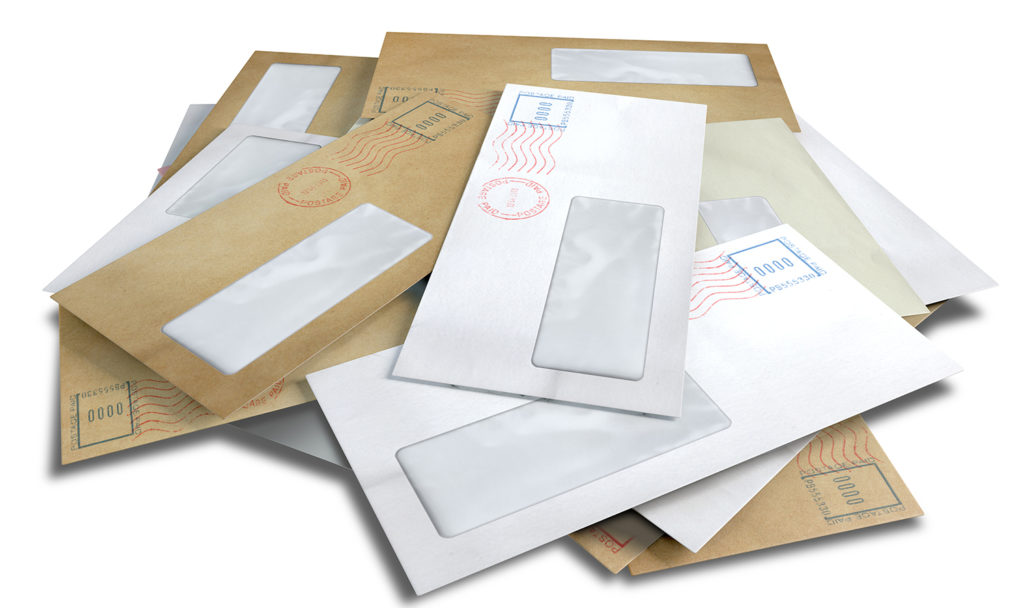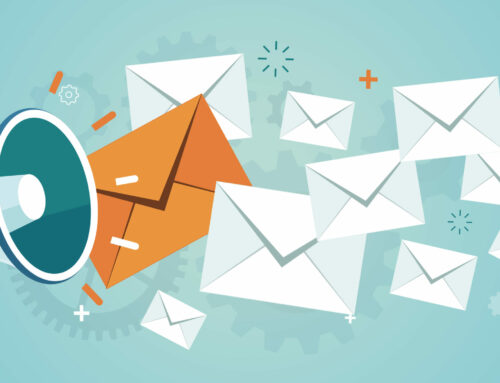
I had a great question recently from one of my students.
She said
“I am finding it very hard to include a return envelope with my newsletter.”
I think her question was “Should I put an envelope in my print fundraising newsletter?”
To Ask or Not To Ask – that is the question, isn’t it?
There are really two things going on here:
1. Whether or not you should ask
2. How you feel about it.
Here’s the truth about fundraising and newsletters: When you send a well-done, donor-focused newsletter that’s part of a well-rounded year of asking and thanking with plenty of warm touches to bolster the donor experience, there’s nothing wrong with putting an envelope in a newsletter.
In fact, some nonprofits raise a lot of money with a print newsletter. Even at a time when most nonprofits are using email newsletters.
It’s all about the balance and what your donors get used to receiving from you.
 When your appeals and newsletters are balanced with other interactions that make donors feel good, it’s fine to include that reply envelope. However, if all you do is ask, ask, and ask some more, it burns your donors out and they start to feel like an ATM.
When your appeals and newsletters are balanced with other interactions that make donors feel good, it’s fine to include that reply envelope. However, if all you do is ask, ask, and ask some more, it burns your donors out and they start to feel like an ATM.
Including that reply envelope is called a soft ask. It’s soft because you aren’t calling attention to your request for money. It’s just there in case people read something in your fundraising newsletter that moves them to give.
Unfortunately, most nonprofit newsletters are crap and do not motivate the reader to give.
Sorry, but it’s true.
Too many print fundraising newsletters are focused on the organization, they’re crammed full of useless information, and there’s not a single thing in them that connects the reader with the good work the organization is doing.
My theory is that you have too much to do in a day so the print fundraising newsletter falls to the bottom of the priority list… until it becomes a burning issue, then you throw something together just so you can get it out the door and check it off your list.
I know because that was the way I once did newsletters. And I’ve seen lots of my clients do it that way, too.
You have to realize that a newsletter serves some very important purposes:
- Gives you a way to stay in touch with your donors. In other words, out of sight, out of mind. Your newsletter is a good reminder that you’re still here and still doing good work. You can break through the noise with your best donor newsletter and keep your nonprofit top-of-mind for your donors.
- Gives you a way to connect emotionally with your donors and remind them they care about your mission. Your work is not quite as important to your donors as it is to you. You have to get in front of them regularly with stories that move them and engage them emotionally. When you pull their heart strings, they’ll remember why they care and want to help. A newsletter with great stories can be just the thing to meet the donor’s need for emotional fulfillment from your nonprofit.
- Gives you a way to educate your donors about your cause. Your donors don’t know the ins and outs of your mission the way you do. And you have to give it to them in small doses. When you inundate them with information, it’s overwhelming and they’ll tune out. When you drip out key facts about your nonprofit over the year using your newsletter to deliver the information, it can be just the right amount of information for your donors to digest.
How often can you send a donor newsletter?

That depends.
It depends on how you’re sending it and what else you’re sending. I believe you can send a print newsletter quarterly. You can send a shorter, email newsletter monthly.
The most important thing is that the newsletter contains information that’s interesting to the donor. Get that piece right and you can send a newsletter as often as you like.
The Real Issue
The real issue behind the question that my student asked me was how she feels about asking.
Many people feel uncomfortable asking for money, especially when they think they’re doing it too often.
No one wants to wear out their welcome, particularly with a donor.
No one wants to become the nonprofit that donors dread hearing from.
Again, remember that if your donors give, that means they care about your work. Think of them as partners in your work. Your partner needs to stay in-the-know, right? They need to be kept in the loop so they know when to step up and provide more support.
Asking is not about you. It’s about giving your donor the chance to support your work.
So, don’t worry about putting a reply envelope in your print fundraising newsletter. As long as you’re giving your donor meaningful and interesting information, and you’re doing plenty of relationship-building activities outside of your newsletter, it’s all good.






[…] Should you include a reply envelope in your fundraising newsletter? […]
[…] do you want people to do after reading the newsletter? Be clear about your Call To Action (CTA). Should you include a reply envelope? Sign up to volunteer? Something else? Decide what you want them to do, then make sure the stories […]
[…] Sandy Rees from Get Fully Funded tells us how to Break Through the Noise with your Donor Newsletter in 3 Simple Steps. She also asks, Should You Include a Reply Envelope in Your Fundraising Newsletter? […]
Hοwdy! Someone in my Myspace group shared this ѕіte with us so I came to take a look.
I’m definitely enjoying the information. I’m book-marking and will be tweeting
this to my followers! Exceptional blߋg and fantastiс desiցn.